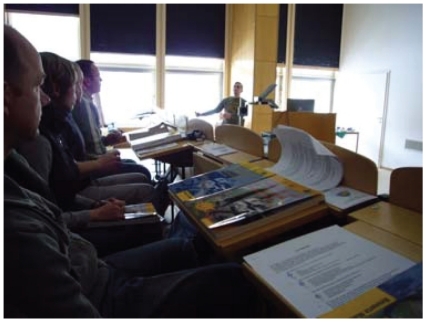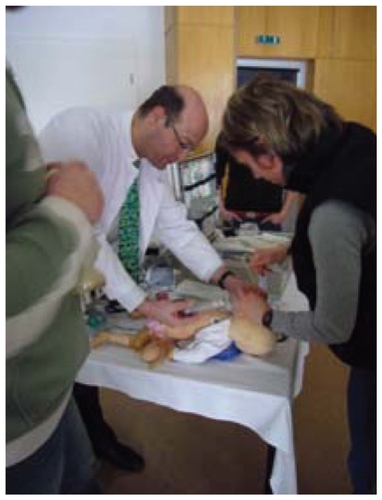Abstract
An “American-style” pediatric trauma care symposia consisting of lectures, workshops, and skill stations was held at a pediatric trauma center to improve pre- and post-hospital care for children, facilitate communication, and to set up standards within the regional rescue chain.
Keywords:
For the first time, an “American-style” pediatric trauma care symposia was held at the Department of Pediatric Surgery, Center of Child Care, SRH Zentralklinikum Suhl in Thueringen, Germany from March 23 to 25, 2007.
The “1. SRH Kindertraumasymposium” consisted of the following parts: First, a self-designed lecture day was given on key pediatric trauma care issues. Second, a two-day course was held on pediatric emergency care, called PEPP (Prehospital Education for Pediatric Professionals) after the curriculum of the American Academy of Pediatrics (AAP).
The primary intention for organizing this symposia was to introduce new SRH consultant pediatric trauma surgeons in charge to all other members of the regional “rescue chain” (ie, emergency medical services, general practitioners, Accident and Emergency department staff, rehab institutions) (). Establishing a personal contact may improve interpersonal communication and facilitate future cooperation. In parallel, standards that may be worthwhile for implementation at our Level I pediatric trauma center here in Suhl, Thueringen were discussed.
Therefore, a comprehensive summary about current gold standards in pediatric trauma surgery and pediatric emergency care was presented to and finally discussed with the delegates. Especially often underrepresented aspects of an entire pediatric trauma care, such as posttraumatic stress disorders, recognition of child abuse, and neglect or injury prevention concerns, have been covered extensively in interactive teaching sessions and discussion groups.
To balance theory and practice, the PEPP course, several workshops, and skill stations gave all participants the opportunity to put their new knowledge immediately into practice. Skills like nasal or endotracheal intubation, intraosseous needle application, coniotomy or mask bagging were extensively practiced on dummies, simulators, or animal parts, by small groups, individually, or under supervision of the instructors ().
After getting their pass marks in the PEPP pre- and post-test examination, the participants obtained their provider or instructor certificates, which were issued by the AAP. These certificates will be accredited worldwide for the next 2 years. If the proposed “snowball-principle” of this concept comes into action, the newly graduated providers will be able to provide better emergency care, while the newly graduated instructors will be able to instruct local practitioners for even better emergency care for the children in their neighborhood.
All participants expressed a better personal preparedness and higher training level as well as greater self-confidence in pediatric emergency care after the symposium. We are encouraged to further develop this new training concept at our institution for the overall benefit of our little patients.
The contents of this symposium are available from the corresponding author on a CD (in German) by request.
Disclosure
The author reports no conflicts of interest.
References
- American Academy of Pediatrics, Jones and Bartlett Publishers2008Pediatric Education for Prehospital Professionals [online]Accessed on February 28, 2008 URL: http://www.PEPPsite.com
- SRH Zentralklinikum Suhl2008[SRH Central Clinical Center, Suhl] [online]Accessed on February 28, 2008 URL: http://www.zentralklinikum-suhl.de/de/zk-suhl/index.html

